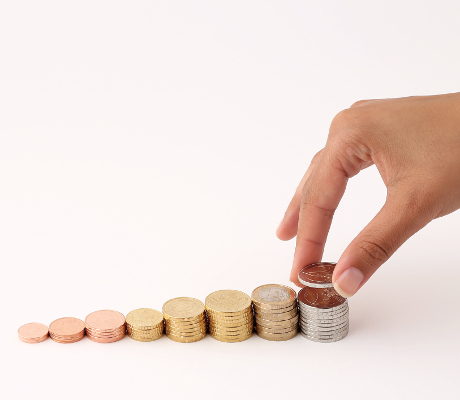5 High-Dividend Stocks Insiders Are Buying

High-Dividend-Yielding Stocks 2017
There are many different indicators that can be used to observe high-dividend-yield stocks that have the potential of earning your capital investment.
A dividend-yielding stock is one that returns money to its investors in the form of a cash dividend; with a high yield, it returns a greater amount.
One bullish indicator of a stock’s yield is insider activity. Insiders are employees who hold senior or other top-tier positions in and near the company and who also purchase shares in it. They are putting their own personal wealth in the company so it can grow over time–and they likely wouldn’t do this unless they know something that outsiders don’t.
Insiders are also considered large shareholders who can change a company for the better, both for themselves and for investors. These types of shareholders are known as activist investors.
But no matter who the insider is, the number-one goal is always to generate a capital gain from the investment.
Below is more information regarding how to be considered an insider and how to use insider buying to your advantage, as well as a list of high-dividend-yielding stocks.
Who Are Insiders of a Company?
First off, insiders of a company can be part of its senior management team. This would include those in positions such as corporate executives and directors.
However, insiders don’t have to be an employee. They can also be lawyers and consultants who have access to very confidential information about the company. However, these individuals will usually have to sign a contract.
The information held by insiders can both help and harm the company’s share price. This is why, when insiders purchase shares, there must be paperwork completed to inform the regulatory body that shares were bought or sold. There may even be times when a company sets a blackout period during which shares cannot be bought or sold. This usually happens after confidential information becomes public.
Shareholders who own 10% or more of a company are also considered insiders. Typically, an individual shareholder owns a large piece of a company when it is a small-market-cap company, or the shareholder is one of the business’s founders. Shareholders who own 10% or more of a large-cap company tend to be professional money managers who work with hedge funds, mutual funds, and/or exchange-traded funds (ETFs).
Even though the shareholder, in this case, may not possess any information that can affect the share price, owning such a large percentage of the company means having the potential to influence management’s decisions. After all, shareholders are part-owners of the company, so they have voting rights. Large shareholders may also advise on either selling off an underperforming asset or making an acquisition.
Why Insider Buying is a Bullish Indicator
When an insider buys shares of a company, they are doing so for one reason: they believe that the shares will come to trade higher, the result being a positive return on the investment.
An insider purchasing shares requires a special procedure. Once the transaction is complete, the details are available to investors the next day. This includes the number of shares, the transaction price, past transactions, and the total number of shares held to date.
There are a few reasons why investors should take a look at insiders buying the stock before deploying their own capital into the investment:
1. Insiders Have Valuation Info
Executives and directors will have the most up-to-date information on the company’s prospects. This includes data about cyclical trends, the demand for products, and everything related to the top and bottom lines of the financial statements.
Knowing this much info puts this group of insiders ahead of analysts and portfolio managers that follow the company. This includes you, the retail investor.
2. The Stock is Undervalued
Whether the insider is within or outside the company, a purchase of shares would signal to the markets that the shares are undervalued.
Insiders within the company look at the present and future direction of earnings. They expect earnings to grow due to better business execution, new products, reinvestments into different areas of the business, and/or acquisition. Whatever the reasons for positive earnings, the overall result should be the same: an increased share price.
Insiders who are large shareholders purchase shares, then continue to increase their holding position because the shares are undervalued. This type of investor looks at the entire company as a whole, as well as at the current stock price, then values it and determines what the stock price should be based on their assessment. When the trading price is lower than the one calculated, they purchase shares.
3. Aligning Insiders’ Goals with All Investors
Normally, a large-cap company has thousands or millions of investors. With so many shareholders, it is not possible for a company to have all shareholders influencing and ensuring that the company is growing as they want.
This is why insider buying is great to take a peak at. The insiders work for the company and have a position in which they can influence the future direction of the company. Since they have their own capital in the stock, they will ensure that the investment is successful over time.
Tips to Consider When Using Insider Data for Investment Decisions
Insiders buying shares is a great bullish indicator. However, there are a few things to keep in mind, because all insider buying transactions are not the same.
1. Position of the Insider
Don’t look at all insiders at one company as the same. For instance, the chief executive officer (CEO) and chief financial officer (CFO) will know a lot more than the directors.
2. Frequency of Trading
If an insider buys shares once and then never looks at the company again, it is still a positive move. However, an insider who continually buys shares shows a lot more positivity. The more trades, the better, because it means that something is happening within the company.
3. Amount of the Purchase
Take a look at the transaction details, such as the price, the number of shares, and the total dollar amount of transactions.
For example, if the CEO of the company bought 100 shares at $10.00, which is equal to $1,000, there is not much to get excited about. But if the CEO bought 100,000 at $10.00, which would amount to $1,000,000, this would be something to take notice of.
4. History of Purchasing
If a recent transaction has occurred, take a look at the past ones as well. For instance, if a CEO bought 100,000 shares at $10.00 one time and 200,000 at $8.00 on another, this CEO is showing confidence in the business’s future.
Even though there is an initial capital loss on the latter share purchase, the CEO is looking at things from a long-term perspective. They realize that the market is not positive on the name and is taking advantage of the lower price to buy more shares.
The same thing would occur if more shares were purchased at a higher price. With the shares trading higher, a new purchase would signal to the markets that there is more growth ahead.
List of High-Dividend Stocks That Insiders Are Buying
Below is a list of high-dividend stocks that insiders are currently buying. Everything that has been mentioned above is applied by looking at the insiders’ transactions. There is more analysis under each description.
| Company Name | Stock Symbol | Price | Dividend Yield |
| Virtu Financial Inc. | VIRT | $16.12 | 5.95% |
| World Point Terminals LP | WPT | $17.25 | 6.96% |
| Quad/Graphics Inc. | QUAD | $24.78 | 4.82% |
| Medical Properties Trust Inc. | MPW | $14.03 | 6.84% |
| Gladstone Investment Corporation | GLAD | $9.61 | 8.74% |
1. Virtu Financial Inc.
Virtu Financial Inc. (NASDAQ:VIRT) became a public company in 2015 and, since then, it has been paying a high dividend yield to its investors. The dividend is paid out on a quarterly basis and amounts to $0.24 per share. The yield on VIRT stock is 5.95%, based on the trading price of $16.12.
The company’s services include trading platforms for global banks and brokers. These are provided to end users, which consist of retail and institutional investors.
Other than the insiders of the company receiving a steady income on their investment, another reason for purchasing shares is the past performance. Shares over the past year are down approximately 28%, meaning that insiders are taking advantage of the lower trading price in order to benefit at a later date.
A reason for the future positive outlook is that the company is operating in the finance and technology sector. VIRT stock provides liquidity to financial markets around the world, including North and South America, Europe, and Asia.
2. World Point Terminals LP
World Point Terminals LP (NYSE:WPT) owns, operates, develops, and acquires liquid bulk storage terminals, as well as stores and refines light and heavy oil.
An oil-based company may seem like a risky investment, but that’s not the case here. This is evidenced by the stock’s beta of 0.42–a measure of daily volatility–compared to 1.0 for the overall market. This simply means that if the market fell by one percent, WPT stock should fall on average by 0.42%.
Another reason to consider owning WPT stock is the high dividend yield it offers. The current yield is 6.96%, which is calculated based on the trading price of $17.25.
What makes WPT a very unique high-dividend-paying stock is that there is no debt on the company’s balance sheet. And, since there is no obligation to service any debt, there is always the possibility of seeing a dividend hike.
3.Quad/Graphics Inc.
Quad/Graphics, Inc. (NYSE:QUAD) operates a business in the marketing services segment. Services from QUAD include retail inserts, publications, newspapers, and in-store marketing. QUAD has a presence around the world, which includes locations in the U.S., Europe, and Asia.
QUAD stock is priced at $24.78 and is yielding 4.82% annually. The dividend of $0.30 per share is paid out on a quarterly basis.
4. Medical Properties Trust Inc.
Medical Properties Trust, Inc. (NYSE:MPW) is a real estate investment trust (REIT) with assets primarily located in the United States. The over-225 total properties in the company’s portfolio include healthcare facilities, such as rehabilitation hospitals, long-term acute care hospitals, and medical office buildings.
Since MPW stock is structured as a REIT, it must pay out at least 90% of its cash flow. This has resulted in MPW stock’s high dividend yield of 6.84%.
Also, since MPW stock operates in real estate, there is a constant stream of funds from new and old tenants alike. This has helped increase the dividend payout as time has passed.
5. Gladstone Investment Corporation
Gladstone Investment Corporation (NASDAQ:GAIN) is a company that makes investments in established businesses that have stable earnings and cash flow. The way this is done is by giving capital to businesses in the form of debt, which must be paid back to Gladstone with interest. The sectors that investments are made in include chemicals, plastics, and rubber; home and office furnishings; and housewares, just to name a few.
GLAD stock pays out a dividend on a quarterly basis, with the amount being reviewed and increased each year. What makes Gladstone even more unique is its high dividend yield of 8.74%.
Normally, with a high-dividend stock, the main concern is the safety of the dividend. However, the regular hikes in the dividend remove some of this concern, especially since they wouldn’t hike the dividend if there was any chance of a cut.
Gladstone’s margins are all higher than the industry averages. On the valuation side of things, GLAD stock is trading dirt-cheap. This is based on its price-to-earnings (P/E) ratio of 4.9, while the industry average is 20.8.











